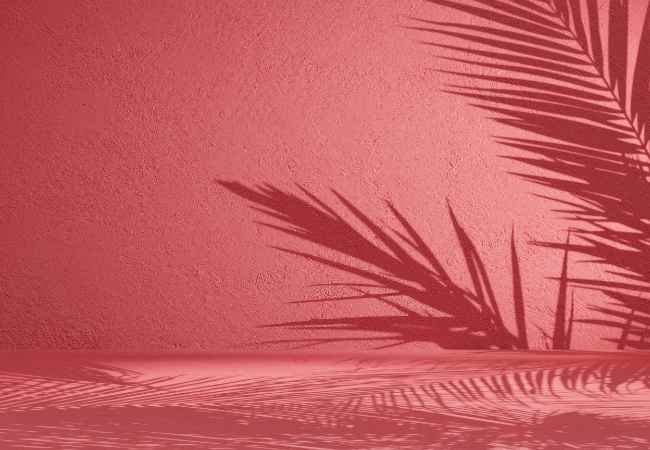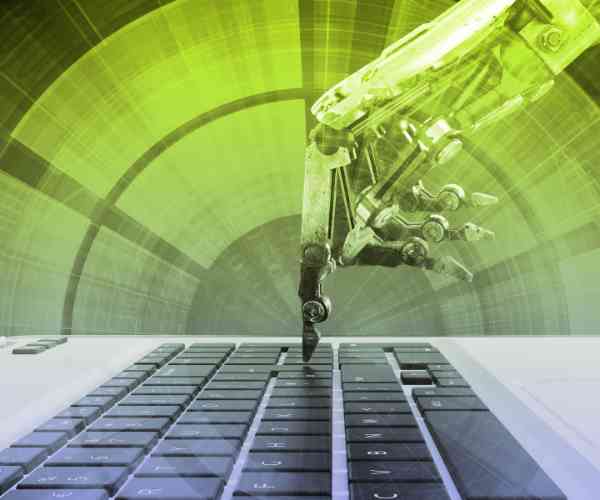When creating a design or a work of art, have you ever stopped and taken a step back, examining the pieces that aren’t the design, like the negative space? Every composition has elements to it and negative space is the area that surrounds, defines and influences those elements. Understanding negative spaces and how to use it effectively can without a doubt change the quality of the work you put out.
Designers have the ability to communicate effortlessly through the artwork that they put out and creating designs using negative space tactics can enhance that. Negative space is always under appreciated and regarded as this invisible aspect of design that does not help in getting a message across, however the reality is quite the opposite. There is so much you can do with negative space that opening your mind towards it allows you to design in a way that is refreshing and allows viewers to want to engage with it rather than having to push themselves to see through all the clutter of the design.
A couple of years ago I was working on branding of a local café. The owner wanted the café to be welcoming and new while also being peaceful and easy to remember. They were having quite a few ideas and due to that their existing logo had a lot of details which made it hard to understand. I had an idea that we could just focus on coffee cup design and the surrounding negative space instead.
Café’s entire branding was redone and it was revamped in such a way that it was easy to read the logo and distinct on their signage and social media which ultimately resulted in the logo being clearer. With all these designs combined together the redesigned cup displayed an astonishing outlook. This unmistakably demonstrated to me the significance of negative space. It makes your designs more expressive and beautiful.

What is negative space?
Negative space is defined as the space around and between the two objects that are in a design. This space is not just there to be left vacant; it is there to balance and highlight the key features of the design. So, think of it this way, it is the outer covering of the subjects that smoothens the view and beautifies the whole picture.
In the design of models or pictures, negative space is also extremely important as far as balance and focus go. This is because it allows the viewer to have a break, hence focusing on only the important parts. Negative spaces when used in a good manner compliments each other and does not clash and this makes the end products to be visually appealing and easy to use.
The Role of Negative Space in Art and Design
Negative spaces have a very good role that should be put into account especially in designs. One of the most important roles is increasing the readability and visual flow of a page. It is not enjoyable to read a book when the pages are packed together with very small spaces in between each page; the same applies to design. Using negative space correctly enables the eye to navigate comfortably throughout a composition making it uncomplicated for the viewer to take in the information being presented.
One other astonishing example to look at is the logo of FedEx. When viewed in a slightly different perspectives, two of the letters E and x have an arrow between them. This is a very interesting detail because the logo itself represents the goals of the company, which is speed and efficiency.
The World Wildlife Federation (WWF) logo is another fantastic example as well, a panda used in negative space that is incorporated in the logo. The minimalist nature of the design complemented by the negative space employed by the organization gets the message across about it’s purpose, conservation and protection of wildlife perfectly. Of what benefit would doing so with a bare minimum approach make the design to be out of the world!.
Lastly, one can embed an element of design which would arouse curiosity among the consumers of the piece. People are inquisitive, and when they notice odd shapes inside negative spaces, they feel inclined to engage themselves with the piece and even further contemplate on it, which in turn enhances the aim of the designer. This notably, is what every designer aspires to do, promote interest and interaction.
Negating the Space gives you an Edge: The ability to see negative space can be a big plus when designing. By negating space, you increase the visual appeal of your designs, improve communication, and create a strong and lasting visual impression for your target audience. As you consider this issue further, keep the great possibilities which lie in the often forgotten space in mind.
Leverage Negative Space in Your Designs
Identify Your Design Objectives
Analysis of goals before getting into the design process is vital.
What idea would you want people to contemplate?
What group of people do you want to reach?
These goals once identified will inform effectively the use of negative space.
Once, I was involved in the rebranding of a community theater aiming at extending it to younger demographics; they needed to be forwarded more information. They rst assumed the design requires many parts a complicated theme which includes bright visuals, many texts and complicated logos. To our surprise, the conversation revealed, the intention was to provide a comfortable climate which seems to be contemporary and fresh.
After realizing what we wanted to accomplish, we worked to include more negative space in our approach. The logo was designed using strong and simple lines which made it look modern and more user friendly. This allowed us to connect with the audience in an entirely different way, making the whole experience great. I learned from this that it is important to define what you want to achieve because it can be crucial in the way you handle negative space and design as a whole.
Choosing the Right Elements
The right design elements must be identified in order to design masterpieces and use negative space in visuals. Every element should build on top of one another to achieve a distinctive style.
One of the things I think about constantly when designing is the use of contrast; elements like shapes and colors and their size in relation to one another. For example, a white space designed with large graphic images can produce interesting results.
Now think about this: if you are designing and one side has a giant black shape and the other has a white and or space in it, then that can look quite nice.
There are some occasions where using contrasting colors increases the impact of negative space. For instance, a pure grey that is juxtaposed against a bright red accent does not overpower the entire design. I always inspire designers to try different combinations of elements that can work together to build the design.
Play with Layout
There’s another component of utilizing negative space and that is rotation of the layout.
Rotate your components around and see how those interactions with negative space will morph.
For example, where I practice from, I found out that the first idea is seldom the best.
As I recall trying out, for example, an invitation to my friend’s ceremony I still remember clearly its mess. My first layout just looked compact together to the point of being just messy.
A couple of iterations later I decided to go for a more asymmetric approach to the design, again adding plenty of negative space around the text. This change made the inviting aesthetically pleasing and refined turning it tailored for the event.
Rather, the joy of experimenting is that it does allow for the saucy discovery, so try to be bold enough to try a range of new layouts until something feels right.
Set Focal Points
Creating focal points using negative space in your works is increasingly appropriate. The emptiness can serve the purpose to call attention to certain details, along with the viewer’s eye movement at a particular part which is important.
Consider the famous marketing symbol of the company, Apple Inc. The silhouette of an apple may have been bitten off that defines the perfect negative space making it very easy to identify. This is a brilliant choice of design, in addition to depicting the logo, gives the impression of modernity and minimalism.
The other case in point is the 2015 advertisement of Levi’s which was a clothing company’s ad where the focal point was a single pair of jeans but set against the silhouette of a person at the background with large space on the negative. Correct installation of the negative space in these poster showed the product but also gave the story and engaged people.
Aspects you would want to focus on in creating focal points using negative space is what elements they want to lift and how you can dispose of the space around them to amplify that feeling.
The Importance of Color and Contrast
Incorporation of color and contrast must be done judiciously, for they significantly affect the negative space in your designs. Colors can add depth and interest resulting in a stronger negative space.
For instance, desaturated tones as background allow active colors to be dominant accent markers thereby directing the eye of the viewer.
A favorite of mine is when I was designing a promotional poster for an art exhibit. A soft beige wall of the building filled in the background with blue and red in the foreground. As a result of tucking the negative space of the artwork , this negative space helped the artwork better stand out against the beige.
Visual examples can be powerful teaching tools so I always tell other designers to study pieces that employ color and negative space well and use them as a basis for design in order to understand the impact those decisions can have on a piece of work.
Things not to do
Overcrowding Your Design
Too many elements in design result to one strong mistake of overcrowding as an example which is one of the startling, most common blunders made. It becomes hard for decision makers to retain the message when too much is competing with itself instead of constructive recess. Viewers are easily confused and miss the center of despite the abundance of middle, everything has been prepared and baffled to be diverted.
When your audience wants to watch dwarf tossing but you force them to see a safe For The Sjefs performance instead, I imagine how they must have felt. I recall experiencing a similar sensation as I ignored the requirements of the assignment. Once, I went a bit overboard and decorated a community event flyer with too much imagery, text, and other things. Rather than actually helping, the final product turned out to be extremely confusing. Through constructive feedback however, it was clear to me that my audience was better served if content was trimmed down and more space was given.
In a world filled with extravagance, take a different route and work towards moderation! Give your design some air to breathe as this can lead to much stronger communication.
This one time I took up the task of designing a promo for a tech startup. In my mind I figured, sleek, clean and minimalist would work best for the young and modern crowd. Unfortunately, I learnt the hard way that the target audience wanted more color and unconventional layout instead, as filtered through my feedback.
This experience in particular made me realize something important; Negative space and how it’s used can greatly influence the overall user experience. It’s all about crafting your design in such a manner that your audience is able to easily comprehend what you are trying to visually tell them and what their expectations are.
Above all, keep in mind that your audience will always be there and there is nothing wrong with tinkering with your methods based on their comments. Negative space must address the needs of your audience, promoting their understanding of your designs and their appreciation for it.
Most important, Negative space is the UNSUNG Hero of graphic Designing, it complement a whole composition by bringing clarity and focus.
“Think of it as the empty space between the words, without it, the words would not make sense.
In other words, the negative space is crucial aspect of design, once designed using delicately, it can help to guide the eyeballs towards the essential elements of design, thereby establishing order and patterns which relates so much information in an easier manner.
Recently I have designed a poster for an art exhibit and purposefully created the negative space around the featured art work.
This approach helped to not only amplify the artwork but also let the audience take a minute to soak it in without being bombarded by unnecessary details.
One aspect has to be understood, watchers may lose sight of the core message when the design gets too busy as they may not know where to look. Negative space helps to define areas within the design and gives each element its own room to breathe, making circulation more effective.
Is Negative Space applicable in all Design Aspects?
Definitely! Negative space is one of the greatest aspects in design, goes hand in hand with any style, ranging from minimalism to maximalism
For minimalistic designer, negative space is an integral aspect, making a design appear more refined.
This is where the popular “less is more” saying is particularly applicable – the emphasis is on the subtly and transparence of the design so that every component is clearly visible.
In the case of maximalist designs, negative space is still relevant ensuring there will be some stillness in comparison to the detail rich visuals common to this style.
In one of the projects I worked for, a design for a high battery music festival I remember we applied the maximalist theory.
Although the event specifications and details were lost amidst bright color and lots of graphics, we did incorporate some negative space so that the viewers could focus on key information.
That way, viewers were able to experience the turbulence of such a design yet still retain the important aspect of an event.
Negative space is of great help regardless if you wish to achieve a clean modern feel or an assorted one.
How do I know if I’m creating more negative space universally sufficient?
Identifying sufficient negative space in a design can be somewhat tricky, however, there are a few guidelines that can guide you in evaluating as well as changing your designs.
Begin by stepping back from your observation point and examining your drawing as a contiguous unit or picture.
Does it look overflowing or too busy? If so, then that is an indication that there is not enough negative space.
What’s more, I have a technique that I like to call the “blur test”.
Try blurring the context of your design or squinting it; this would give you a favored eye relative vision of what element needs more room around it.
If certain elements are too close to one another or if they are too far away from the main element, then increase the negative space around those elements.
Another useful tip is to try and avoid the extreme ends.
The 60-30-10 rule which says that 60 percent of the design should be the “main” color, 30 percent should be “secundus” and 10 percent should be the “accent” color helps you imagine how much of the three design elements should be spaced from one another.
By listening to your judgement of how your designs can be improved and changing them accordingly, you succeed to create a more pleasurable design.
In closing, It is vital for a designer to be equipped with the knowledge of how to execute impressive designs using negative space.
The use of negative space to enhance paragraphs, pictures and designs can help you achieve greater clarity and focus in your work.
I recommend that you thoroughly explore negative space, throughout the process of constructing, which may improve your designs and graphic messages.
Feel free to adjust the space around elements in your every design as the project scope takes you. Whether it is your own project or a commissioned one, be bold!
Lastly, I would more than love to know about your real life experiences! Kindly drop the designs that you have worked on that used negative space effectively in the comments section below.
Lets motivate ourselves with our ideas and out of the box thoughts!






